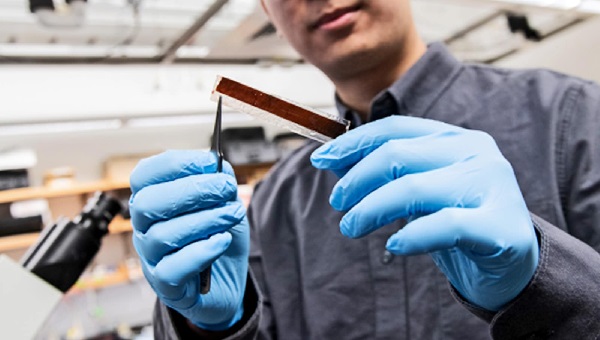Health Matters
Sometimes our bodies need a boost. Millions of Americans rely on pacemakers – small devices that regulate the electrical impulses of the heart in order to keep it beating smoothly. But to reduce complications, researchers would like to make these devices even smaller and less intrusive.
A team of researchers with the University of Chicago has developed a wireless device, powered by light, that can be implanted to regulate cardiovascular or neural activity in the body.
The featherlight membranes, thinner than a human hair, can be inserted with minimally invasive surgery and contain no moving parts.
The results could help reduce complications in heart surgery and offer new horizons for future devices.
“The early experiments have been very successful, and we’re really hopeful about the future for this translational technology,” said Pengju Li, a graduate student at the University of Chicago and first author on the paper.
The laboratory of Prof. Bozhi Tian has been developing devices for years that can use technology similar to solar cells to stimulate the body.
Photovoltaics are attractive for this purpose because they do not have moving parts or wires that can break down or become intrusive — especially useful in delicate tissues like the heart.
And instead of a battery, researchers simply implant a tiny optic fiber alongside to provide power.
But for the best results, the scientists had to tweak the system to work for biological purposes, rather than how solar cells are usually designed.
“In a solar cell, you want to collect as much sunlight as possible and move that energy along the cell no matter what part of the panel is struck,” explained Li. “But for this application, you want to be able to shine a light at a very localized area and activate only that one area.”
For example, a common heart therapy is known as cardiac resynchronization therapy, where different parts of the heart are brought back into sync with precisely timed charges.
In current therapies, that’s achieved with wires, which can have their own complications.
Li and the team set out to create a photovoltaic material that would only activate exactly where the light struck.
The eventual design they settled on has two layers of a silicon material known as P-type, which respond to light by creating electrical charge.
The top layer has many tiny holes – a condition known as nanoporosity – which boost the electrical performance and concentrate electricity without allowing it to spread.
The result is a miniscule, flexible membrane, which can be inserted into the body via a tiny tube along with an optic fiber – a minimally invasive surgery.
The optic fibre lights up in a precise pattern, which the membrane picks up and turns into electrical impulses.
The membrane is just a single micrometer thin – about 100 times smaller than the finest human hair – and a few centimetres square.
It weighs less than one fiftieth of a gram; significantly less than current state-of-the-art pacemakers, which weigh at least five grams.
“The more lightweight a device is, the more comfortable it typically is for patients,” said Li.








